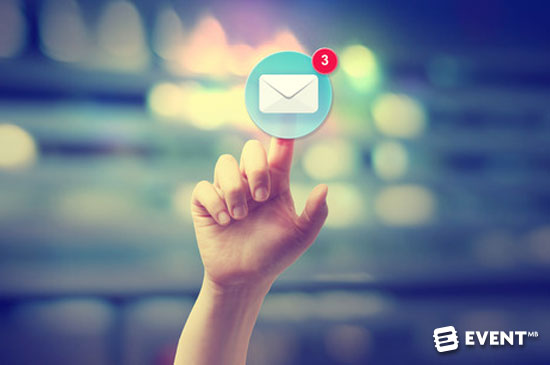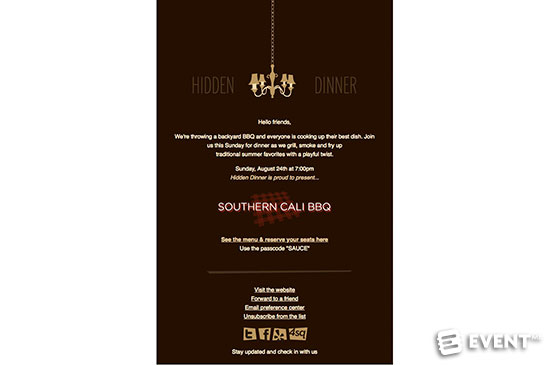Skift Take
Email marketing is essential in any event planner’s toolkit but what makes a good email? Conversion. Your email must be a workhorse grabbing attention and enticing action. Here’s what you need to know.
According to the Radicati Group, 2017 will see 269 billion emails sent daily with the average office employee receiving over 121 emails a day. And you’re wondering why response rates are low! It’s not you, it’s them, or rather, an overcrowded inbox. Even getting your attendees to open your emails can be troublesome. So you have to do something to stand out and get attention.
You need email templates and/or designs that convert. But before we get into the components of what makes conversion happen, it’s important to note a strict copy and paste template will never bring heavy conversions for you.
Personalization is key and that involves personalizing the communication itself as well as who receives it. For instance. If you have a list of attendees from last year that you want to reach out to again, cull that list and pull out anyone who has already signed up for your event. If you send out a blanket email about your event (potentially to some people who have already signed up), you are telling them several things:
- I’m not in control of my data or I didn’t take the time to sort.
- I send the same message out to everyone because no one told me personalization will make people listen to me.
- I’m inviting so many people, I don’t care who you are or if you’ve already registered. This thing’s going to be huuuu-ge!
- I lost your registration.
None of those are good messages for your intended audience. This isn’t a kegger. People expect a more personalized approach, particularly if they are paying you to attend.
Tips for Creating Event Emails that Convert
In addition to personalization (please kill intros such as “Dear past attendee”. We had the capabilities to do better than this since the 1990s with mail merges in Word and WordPerfect), these tips can help you bring in the attendees.
Timing
Timing your email is important to getting it opened. The email won’t drive conversions if no one opens it. Hopefully, this isn’t the first email you’re creating for this group. If you have some historical data about open rates and time sent, review it before you decide when to send it.
One Is Not Done
Do you know the phrase, “One and done”? That is never the case with email marketing. In email marketing you are creating an impression. While you don’t want to be bothersome, view your emails as part of a multi-touch campaign. Don’t just send one email and be done with it. Follow up.
Subject Line
If they don’t open the email, they’ll never convert or see your fantabulous design. You need to spend as much time on your subject line as you do the content of the email. (Here’s a handy-dandy subject line tester.) Most people decide whether your email gets opened based on the “from” and the subject line. This decision takes only seconds, especially when there are 120 other unopened emails in the inbox.
Testing
Unless you have the gift of prescience, you will most likely need to test your email templates, phrasing, button placement, color, and links. Anything that required a choice on your part, from words to design, will either drive action or suspend it. Take the time to do some A/B testing on your event emails to ensure the most conversions.
Templates that Drive Action
Here are some examples of good event email templates/designs and what they do well:
Hidden Dinner
This Hidden Dinner invitation is in keeping with the brand’s secrecy. It’s an “Eat Easy” (instead of a Speak Easy) where you need a code to enter the website and find out where the next hidden dinner is. Notice in this invitation they keep the information to a minimum, use vague language that inspires curiosity like “playful twist”, and it drives traffic back to the website to see the menu and reserve seats. They also include the ability to forward it to a friend and have social shares.
It’s important that if you decide on a designed out email like Hidden Dinner’s that it is in keeping with your event, both in branding and in tone. If you go to this extent on the design, make sure recipients see it by including a subject line that inspires opens.
Litmus
In all fairness, Litmus tests and tracks email marketing analytics and this invitation is for their email design conference – so they should know what they’re doing!
They have a bold use of color yet keep it clean. Information is incredibly easy to scan and they invite the recipient to share the info on Twitter. But the thing that makes this email so cool is its use of a Live Twitter Feed at the bottom. It provides excellent social proof. But you should only use a technique like this if people are readily talking about your event or you have staff who can covertly get the pumps primed just before the email send.
What Does a Good Email Template Include?
While these are good examples of effective designs, you don’t have to design out your emails. You can use straight text. A good email template for an event includes:
- Only the information they need to want to learn more. Get them hooked. Get them moving (to your event page, registration section, etc.)
- A scannable format. Short sentences. Bullets. Simple words.
- A call to action. An event email’s call to action is most likely “register now” but if you’re doing a series and a marketing campaign it may be “learn more.” You can use different words to spark interest such as “Join us in Palm Springs” or a register now button that reads, “You bet I’ll be there.”
- Mobile optimization. This is something you don’t need to worry about quite as much in text format, but you still need enough white space to make it easy to open hyperlinks. (Fat finger syndrome is real.)
- An offer or discount with exclusivity (e.g. first 100 people) or a deadline (by April 30). You can even create mystery. The Social Boom! Conference offered an Early, Early Bird Discount that was only available as the team placed the finishing touches on the event page. Only the hosting group knew how long it would take them to finish the page and when it was completed that deep discount disappeared. These sorts of scarcity pieces drive action.
In Conclusion
Remember, your goal in most cases is to get potential attendees to your event landing page or your website for registration. You only need to put enough information in the email to get people interested. You needn’t junk it up with everything they need to know to attend (i.e., leave off the parking info).
Also, think of your email campaign as well as individual emails. Email marketing for events, especially high ticket multi-day events, is a courtship. The bigger the investment on behalf of the attendee, the longer it may take to convert. Think of multiple touch points and how you can entice them into attending. Unless you’re throwing a company Christmas party, you should count on multiple touches as part of your email marketing strategy.







